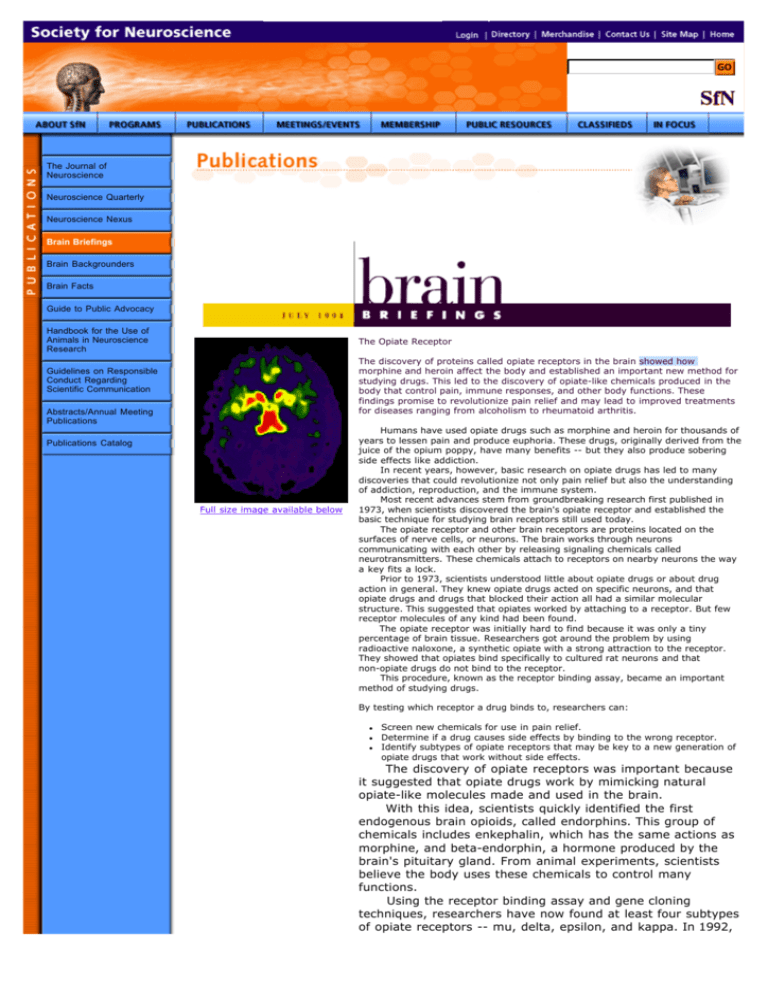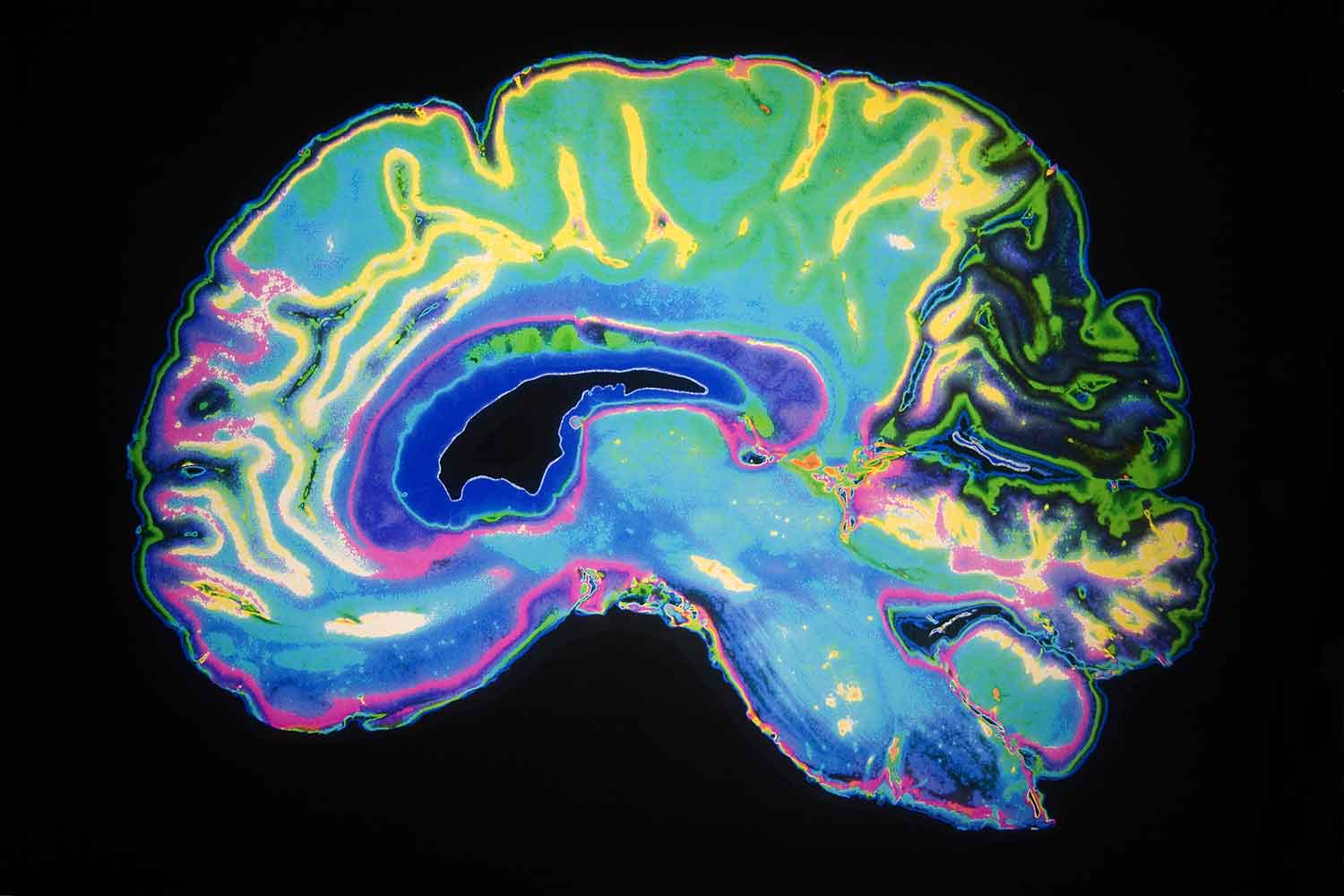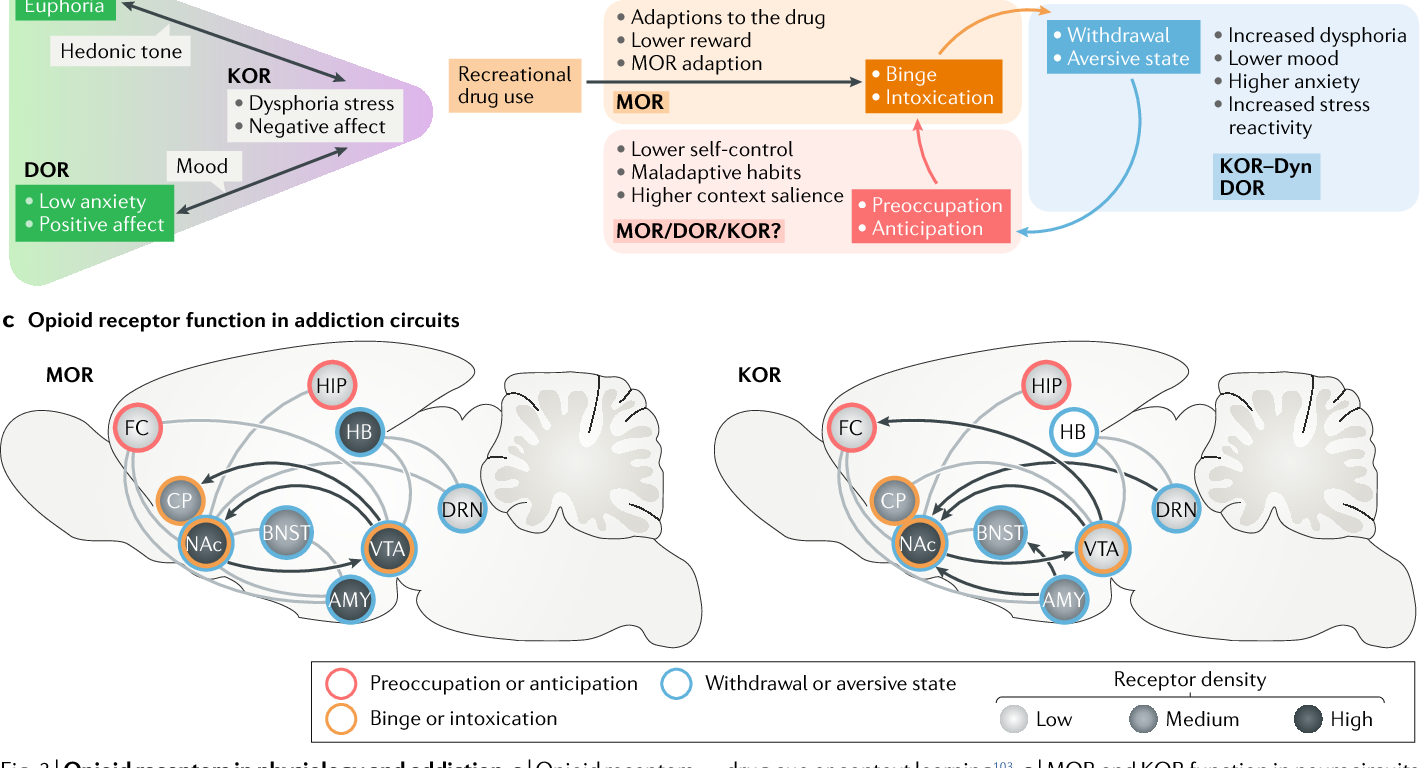Low battery
Battery level is below 20%. Connect charger soon.
· editor’s note: · these changes implicate the brainstems breathing circuitry which we confirm by locally eliminating the µ-opioid receptor. · this pet-fmri fusion study reveals that endogenous u-opioid receptor system modulates altruistic brain activity and its individual differences. · the human brain contains hundreds of receptor subtypes, many of which remain structurally mysterious. Pharmaceutical opioids, such as morphine and oxycodone, and illicit opioid drugs like heroin, affect the brain and body by … This extraordinary interview with neuroscientist candace pert, who died in 2013, takes us back to the discovery of the opiate receptor, which binds to the natural … However, a unique type of allosteric site has also been discovered at the interface of the receptor-lipid bilayer, similar to the β 2 -adrenergic receptor. Here, we review recent identifications of … Finding the opioid receptor snyder reasoned that he should start by trying to identify the receptors that opiates — including heroin, morphine, and codeine — were presumably binding … What ohsu’s team has done is set a precedent—a demonstration … These data complement the findings in cocaine and … · mesh terms amino acid sequence analgesia animals binding sites brain / metabolism* cattle cell membrane permeability humans models, biological narcotic … · stanford medicine researchers discuss the brain’s ancient wiring and how its built-in reward-seeking system can be hijacked by addiction — as well as ways to prevent and treat it. We find the critical brain site is the prebötzinger … · the temple researchers made this discovery after lighting up the brains of mice using a technique called clarity followed by three-dimensional (3d) fluorescent imaging. · what do we know about opioid signaling? This study suggests that opioid receptor binding is increased throughout the brain in early abstinence from dependent opioid use.




